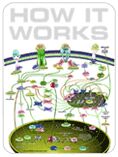免疫毒性PCR芯片 Induced Pluripotent Stem Cells PCR Array

免疫毒性PCR芯片 Induced Pluripotent Stem Cells PCR Array
免疫毒性PCR芯片 Induced Pluripotent Stem Cells PCR Array
运费 ¥0.00
“英拜为您实验加速” 技术服务网址:http://www.yingbio.com/ 服务热线:400-696-6643、 18019265738 邮箱:daihp@yingbio.com 、 huizhang1228@foxmail.com Induced Pluripotent Stem Cells PCR Array 诱导多能干细胞PCR芯片 he Human Induced Pluripotent Stem Cells RT² Profiler PCR Array profiles the expression of 84 key genes involved in induced pluripotent stem cell (iPSC) research. iPSCs hold the promise to provide treatments for a multitude of diseases by converting adult somatic cells into pluripotent cells that are able to differentiate into any one of a variety of cell types, avoiding the ethics of embryonic stem cell (ESC) use. The process starts by transfecting or transducing somatic cells (such as keratinocytes) with constructs ectopically expressing a combination of specific transcription factors (KLF4, MYC, POU5F1, and/or SOX2). These transcription factors reprogram or induce the somatic cells to "dedifferentiate", losing markers of the original cell type and gaining markers of pluripotent cells. Often, a combination of additional transcription factors (such as ESRRB, LIN28A, NANOG, MYCN, and/or NR5A2) increases induction efficiency. To control the procedure, the expression of multiple gene classes included on this array must be monitored simultaneously: representative parental cell line genes, the ectopically expressed transcription factors, markers of iPSCs, and markers of the redifferentiation into ectoderm, endoderm, and mesoderm. ESCs and iPSCs have proven to not be functionally identical. Therefore, this array also analyzes genes highly expressed in both cell types to help distinguish them and better understand their differences. Because the expression of typical housekeeping or reference genes often proves inconsistent in these types of studies, the array includes another gene (NAT1) used in iPSC gene expression for data normalization if needed. A set of controls present on each array enables data analysis using the ΔΔCT method of relative quantification and assessment of reverse transcription performance, genomic DNA contamination, and PCR performance. Using real-time PCR, research studies can easily and reliably analyze the expression of a focused panel of genes involved in the induced pluripotent stem cell dedifferentiation and redifferentiation processes with this array. The RT² Profiler PCR Arrays are intended for molecular biology applications. This product is not intended for the diagnosis, prevention, or treatment of a disease. 96-well Plate, 384-well (4 × 96) Plate, and 100-well Disc formats are available. 诱导多能干细胞PCR芯片用于研究参与诱导多能干细胞(iPSC)的84个关键基因的表达。iPSCs有望治疗大量疾病,通过转化成年体细胞为多能细胞,使其分化成多种细胞类型中的任何一个,胚胎干细胞使用的伦理性。这个流程首先使转染或转导体细胞(如角化细胞),构建异位表达特定的转录因子的复合体(KLF4,MYC POU5F1,和/或SOX2)。这些转录因子重组或诱导体细胞“去分化”,失去原始细胞类型的标记并获得多能细胞的标记。通常,额外的转录因子的结合(如ESRRB LIN28A,NANOG MYCN,和/或NR5A2)会增加感应效率。为了控制该程序, 该芯片上的多种基因类群的表达必须同时被检测:代表亲本的细胞系基因,异位表达的转录因子,iPSCs的标记,再分化成外胚层、内胚层和中胚层的标记。ESCs和iPSCs已被证明功能不完全相同。因此,这个芯片分析两者细胞类型都高表达的基因来帮助区分和更好的理解他们之间的差异。因为典型的管家或参考基因的表达往往在这些类型的研究证明不一致,该芯片包含另一个基因(NAT1) 用于iPSC基因表达数据标准化。每张芯片含一个对照组使得分析数据时可以用相对定量ΔΔCT方法评估逆转录效率,基因组DNA污染,和PCR效率。利用这张芯片,通过实时定量PCR,可以简易且可靠地分析诱导多能干细胞去分化和再分化过程关键基因的表达。 PCR芯片仅用于分子生物学应用。本产品不用于疾病的诊断、预防和治疗。 提供96孔板——384 -(4 x 96)板,和100孔板 Somatic Cell Markers: Keratinocyte: CDH1, GJB2, KRT15, NUMB. Blood Stem Cell: CD34. Fibroblast: COL1A1, NCAM1. Neuronal Stem Cell: EMX2, FABP7, NES, OLIG2. Cardiomyocyte: PECAM1. Germ Cells: SYCP3. Induced Pluripotent Stem Cells: iPSC Markers: DNMT3B, PODXL, ZFP42. Other iPSC-Related Genes: ACTC1, ALDH1A1, ALDH2, APC, BGLAP, BMP2, BRIX1 (BXDC2), CCNE1, CD9, CDH2, COL2A1, COL9A1, EP300, FGF4, FGFR1, FOXD3, GABRB3, GJA1, GRB7, HDAC2, KAT2A, KAT7, KAT8, LEFTY1, LEFTY2, NODAL, PARD6A, REST, RUNX2, TERT. Reprogramming Factors: KLF4, MYC, POU5F1 (Oct3/4), SOX2. Other Reprogramming Factors: ESRRB, LIN28A, NANOG, MYCN, NR5A2. Reprogramming Enhancers & Inhibitors: AICDA, TP53, UTF1. Embryonic Stem Cells: ESC Markers: ALPL, GDF3, TDGF1 (CRIPTO), TERT. Other ESC-Related Genes: CCNA2, CDK1 (CDC2), CDC42, DPPA2, DPPA3, FGF2, HSPA9, MYBL2, OTX2, SOX15, TBX3, TCF3. Pluripotency Markers: ALPL, DNMT3B, FGF4, FOXD3, GDF3, LEFTY1, LEFTY2, NODAL, PODXL, UTF1, ZFP42. Early Differentiation Markers: Ectoderm: COL1A1, NCAM1, NES, PAX6, TUBB3. Mesoderm: CD34, GATA2, HAND1, MESP1, PECAM1, RUNX1. Endoderm: FOXA2, GATA4, HNF4A, SOX17. Housekeeping Gene: NAT1. |








